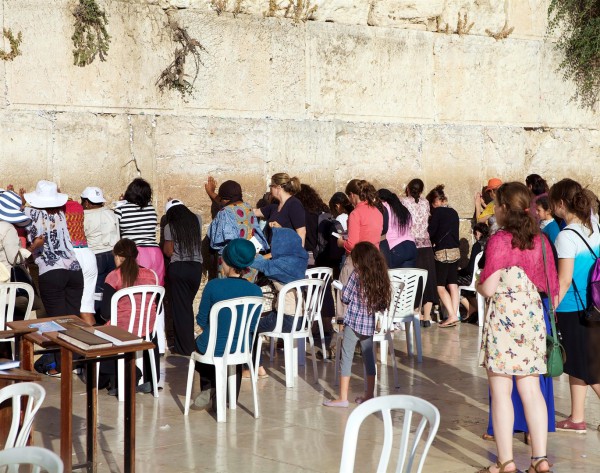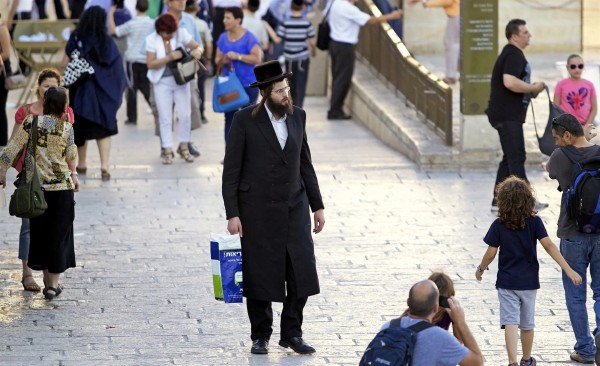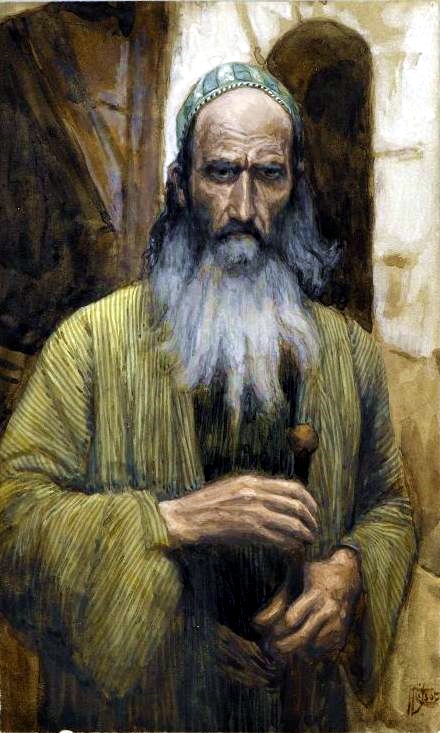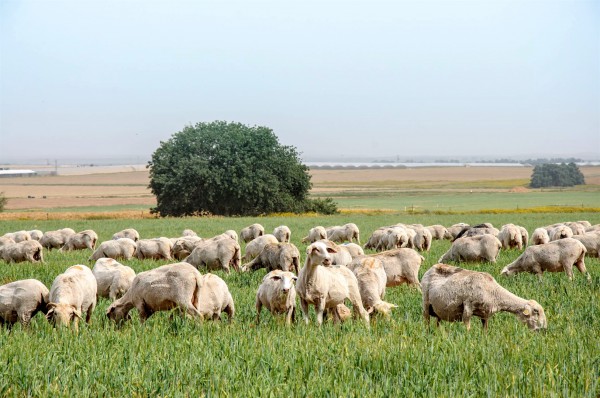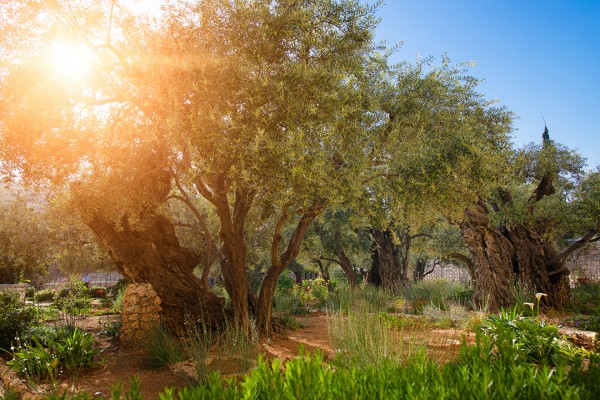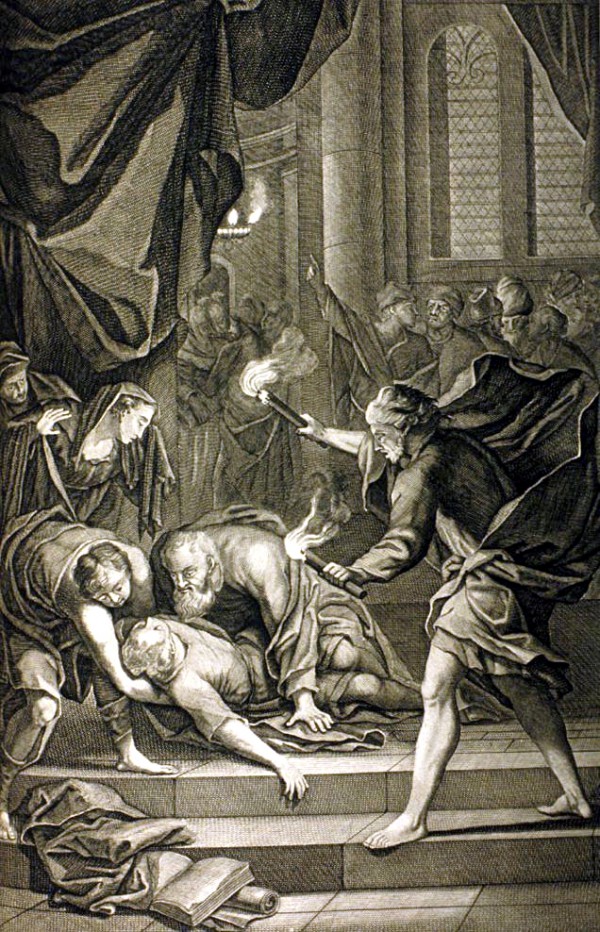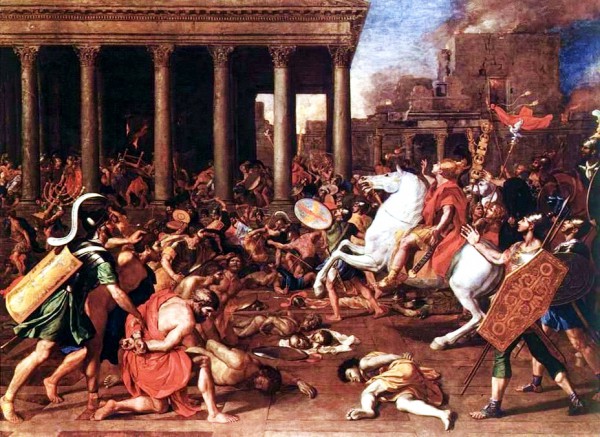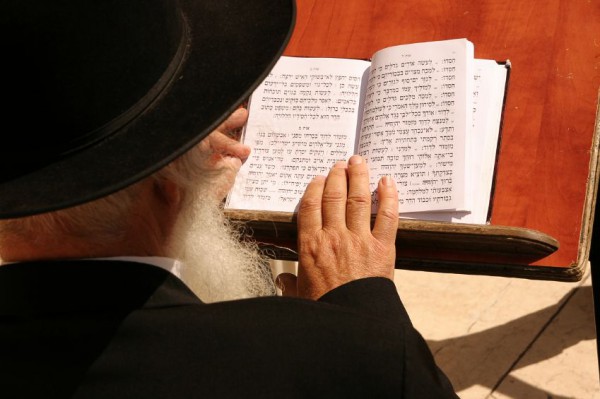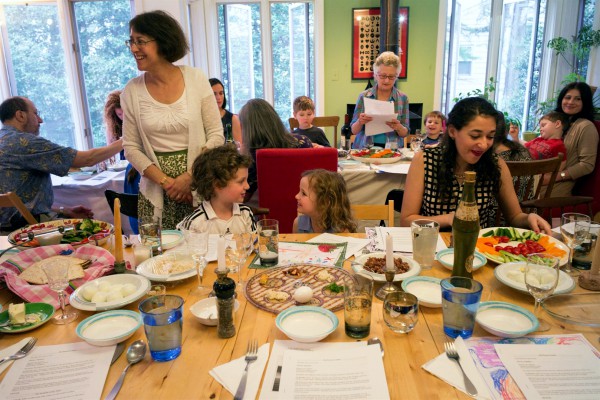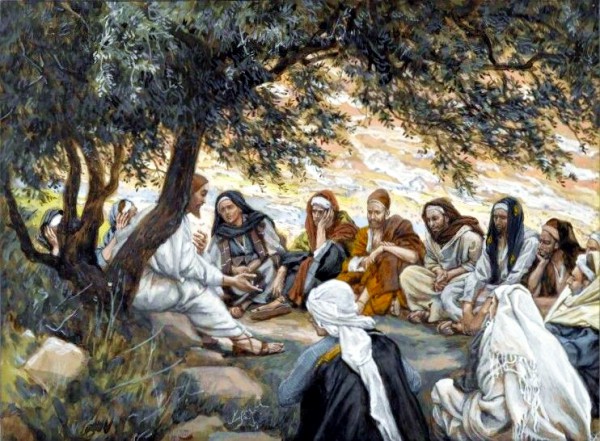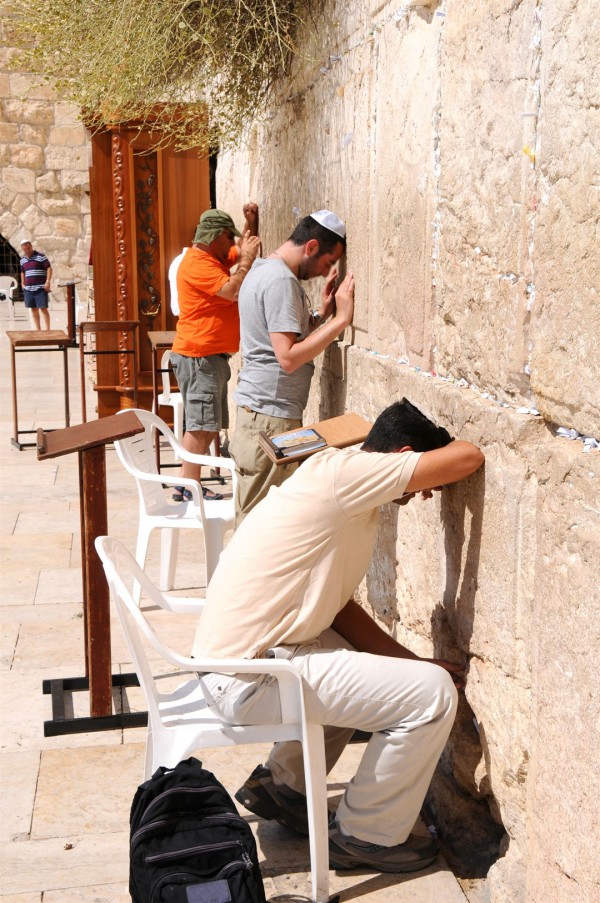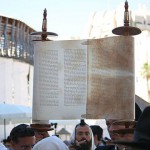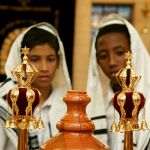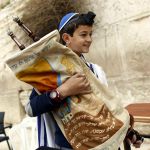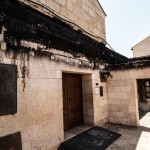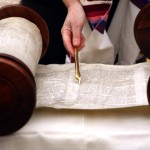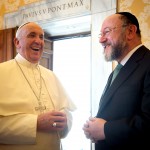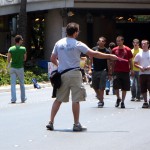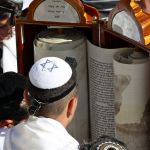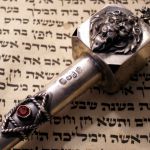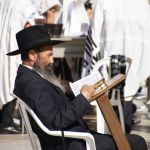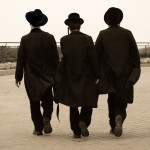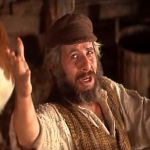“Here there is no Gentile or Jew, circumcised or uncircumcised, barbarian, Scythian, slave or free, but Messiah is all, and is in all.” (Colossians 3:11)
Today, the family of Believers in Yeshua (Jesus) is characterized by divisions between denominations and movements.
Not so within the assembly of the first Believers in Yeshua in Israel.
The Book of Acts reveals that the original Believers were in total unity as they worshiped at the Jewish Temple, praying together and sharing in common what they had (Acts 1:14; 2:44).
“And continuing daily with one accord in the Temple, and breaking bread from house to house, they ate their meat with gladness and singleness of heart.” (Acts 2:46)
As well, the expression of their faith was entirely in keeping with Judaism, for it was not the intention of the Messiah to start another religion.
But we see from the Brit Chadashah (New Testament) that disagreements first arose between Jewish Believers after the Gentiles began coming to faith.
Early Dispute Disrupts Unity in the Sheepfold
Some of the first Jewish Believers felt that the Gentile Believers should submit to the full ritual conversion process and become fully Jewish. Of course, this would mean that they would have to take a vow to keep not only Torah’s commandments, but also the traditional law, which is much more extensive than the 613 commandments found in the Torah.
That group believed that people could not be saved without undergoing circumcision.
In a council meeting with the apostles and elders in Jerusalem to decide how to proceed in this matter, Paul and Barnabas described how God was moving among the Gentiles without any conversion rituals. Peter also stood up and presented his position, saying that God was pouring out His Ruach HaKodesh on them, just as He was on Jewish Believers.
James, who led the meeting, then stood up and expounded upon the prophetic significance of the Gentiles coming to faith in Yeshua, linking it to the end-time restoration of Israel and the appearance of Gentiles who are called by His name (Acts 15:16–18; Amos 9:11–14).
In light of the fact that the law of Moses could be heard every Sabbath in the synagogue of every city, James then suggested that a letter be sent to Gentile Believers that they should observe the following:
“You are to abstain from food sacrificed to idols, from blood, from the meat of strangled animals and from sexual immorality.” (Acts 15:29)
While the Bible says that Torah’s commandments are not difficult to keep (Deuteronomy 30:11–14; see also Romans 10:8), the early followers of Yeshua concluded at the meeting that the “extra,” traditional laws are too burdensome for Gentile Believers and the conversion process to Judaism is unnecessary for salvation.
Nevertheless, James did indicate that he expected Gentile Believers to learn the law of Moses (Acts 15:21) so they would grow in their understanding of how to live a holy life.
And so we see here a picture of Gentiles and Jews uniting in one sheepfold as Yeshua promised in John 10:16: “I have other sheep that are not of this sheep pen. I must bring them also. They too will listen to my voice, and there shall be one flock and one shepherd.”
Unity: One Olive Tree
Paul explains in Romans 11:11–31 that Believers are grafted into one tree—a Jewish tree and all are nourished from the same root. Gentiles have been grafted into this tree as wild olive branches while Jewish believers are grafted into the same tree, which is their own tree.
It seems, however, that Paul had to address some arrogance among Gentile Believers who looked down on Israel for not accepting Yeshua as their Messiah nationally.
“You will say then, ‘Branches were broken off so that I could be grafted in.’ Granted. But they were broken off because of unbelief, and you stand by faith. Do not be arrogant, but tremble. For if God did not spare the natural branches, He will not spare you either.” (Romans 11:19–21)
Paul warns them that falling back into unbelief could cause them to be cut off: “And if they [the Jewish People] do not persist in unbelief, they will be grafted in, for God is able to graft them in again.” (Romans 11:23)
In the last 100 years, a move has taken place among the Jewish People that has seen many grafted into their own tree. That move continues to grow and prosper, especially in Israel where faith in Yeshua as the Messiah is flourishing and being increasingly accepted by the Jewish people living there.
We see from Paul’s analogy of the olive branches being grafted together that God intended the Gentile Believers in Yeshua to live in unity with the Jewish People at large, and especially so with Jewish Believers, who would naturally maintain their Jewish identity.
So what happened?
Arguments Over the Passover
In the early congregations, Jewish and Gentile Believers prayed together and celebrated the Jewish festivals and holidays, as did Yeshua.
As the nations came to faith in Yeshua outside of Israel, Gentile Believers maintained a relationship with the Jewish People. For instance, to celebrate the resurrection of Yeshua, they consulted with the local rabbi who would tell them when the Passover holiday was to take place.
How then did the celebration of Passover among Gentile Believers develop into the Easter tradition? The first accounts come from the second century AD.
Some Gentile believers kept very close to the Jewish roots, celebrating Yeshua as the Passover Lamb on the first night of Passover, which is the 14th of the Hebrew month of Nissan. Most of these believers lived in Asia Minor.
Others emphasized the resurrection, which occurred on the first day of the week. The believers in Rome moved the observance of the resurrection to Sunday and began the celebration of Easter.
A controversy arose when those called the Quartodecimans (Latin, referring to “fourteenth”) followed the Jewish practice of fasting on the eve of Passover.
This tradition was established by the apostle John and practiced by his disciples, including Polycarp (c. 69 – c. 155), who was the bishop of Smyrna, one of the seven churches of Asia and by Melito (died c. 180) of Sardis, another church in Asia.
This fast was followed by the Passover celebration beginning at sundown on the 15 of Nissan in close adherence to the Jewish tradition.
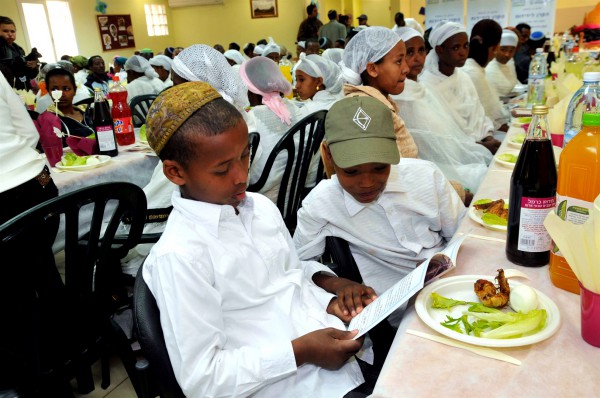
New Ethiopian immigrants attend a model Seder at the Jewish Agency Absorption Center in Mevasseret Zion outside Jerusalem in preparation for their first Passover in Israel.
Meeting on the First Day of the Week (Yom Rishon)
Yeshua’s followers met together to break bread after the Sabbath, on Saturday evening. And so, we find an account in Acts 20 of Paul talking late into the night in Troas.
It seems that a young man sunk into a deep sleep and fell three stories to his death around midnight.
Paul stopped talking and went down, throwing himself on the man and raising him from the dead.
Then he went back upstairs, broke bread and continued talking until daylight, Sunday morning, before going on his way.
Of course, eventually, Gentile Believers began meeting on Sunday morning.
Although Jewish Believers continued to attend the synagogue, they began to experience some pressure, especially after the destruction of the Temple.
While the original Believers who lived in Jerusalem practiced Judaism and visited the Temple on a daily basis, the emergence of the Jewish Revolt in the early 60s reminded Believers of Yeshua’s warning:
“While people are saying, ‘Peace and safety,’ destruction will come on them suddenly, as labor pains on a pregnant woman, and they will not escape. But you, brothers and sisters, are not in darkness so that this day should surprise you like a thief.” (1 Thessalonians 5:3–4)
The Jewish believers escaped Jerusalem, as described by an early church father Eusebius, and crossed over the Jordan and went to Pella, a Nabataean fortress in the mountains. They thus escaped the onslaught of another Roman general, Titus, who totally destroyed the city and Temple; still, they incurred the wrath of their fellow Jews who now saw them as deserters.
It is generally believed that the entire body of Jewish Believers managed to leave Jerusalem and avoid its destruction by the Roman forces. Pella became a major center of worship.
Following the destruction of the Temple in AD 70, the Tabbis considered Jewish Believers to be Jews, but some began to discourage their presence in the synagogues.
One factor that contributed to Gentile Believers separating themselves from their Jewish brethren was Rome’s institution of the Fiscus Judaicus or Jewish Tax.
The Roman Empire imposed this tax on Jews after the destruction of Jerusalem and the Temple in AD 70. It replaced the Temple tax and was used for the upkeep of the Temple of Capitoline Jupiter in Rome.
Only those who had abandoned Judaism were exempt from the tax. The tax, therefore, motivated Gentile Believers, who up until then were considered a sect of Judaism, to disassociate themselves from Judaism.
Another force that contributed to division in the late first century was the inclusion of the Birkat HaMinim—the 19th blessing in the Amidah (Standing Prayers), a request of divine punishment (a curse) from God directed against the paroshim—those said to have separated themselves from the community.
The paroshim were associated with the minim or heretics, which were understood to be the Jewish Believers in Yeshua and perhaps the Essenes.
In this way, Jewish Believers were no longer able to lead prayer without actually evoking a curse on themselves. This benediction went a long way to make Jewish Believers feel unwelcome in the synagogue, causing them to worship separately.
Early writings confirm this cursing, including Justin Martyr in his 2nd century Dialogue with Tryphon and Origin, who lived in the third century AD.
Epiphanius, who lived in the fifth century AD and wrote that “Three times a day they say: ‘May God curse the Nazarenes.’”
[The term Nazarenes (Notzrim) referred originally to the first Believers in Yeshua; however, it also refers to the 4th century sect of the Nazarenes, Believers who considered themselves Jewish (thought to have originated with the Believers who fled Jerusalem) and kept the Torah. The term could also apply to Gentile followers of Yeshua in general.]
The First Council of Nicaea
Over time, Gentile Believers began to incorporate pagan observances and rituals over Jewish practice in their worship. In AD 325, the First Council of Nicaea was convened by the Roman Emperor Constantine in order to set church doctrine.
None of the 318 bishops attending were of Jewish ancestry. One of the main acts of the Council was to establish a separate celebration of the Passover from the Jewish Passover.
This later became identified by the pagan name of Easter (from the Babylonian fertility goddess Ishtar).
The Council also established Sunday as the new Sabbath, as opposed to the Biblical seventh day Sabbath.
The following Council of Antioch prohibited Christians from celebrating the Jewish Passover.
The Council of Laodicea shortly after, prohibited celebration of the Biblical or Jewish Sabbath. Christians were even prohibited, under penalty of death, to marry Jews. Jews became second-class citizens.
Anti-Semitism was so rampant at this time that a 4th century church in Constantinople held the following creed:
I renounce all customs, rites, legalisms, unleavened breads and sacrifices of lambs of the Hebrews, and all other feasts of the Hebrews, sacrifices, prayers, aspersions, purifications, sanctifications and propitiations and fasts, and new moons, and Sabbaths, and superstitions, and hymns and chants and observances and Synagogues, and the food and drink of the Hebrews; in one word,
I renounce everything Jewish, every law, rite and custom and if afterwards I shall wish to deny and return to Jewish superstition, or shall be found eating with the Jews, or feasting with them, or secretly conversing and condemning the Christian religion instead of openly confuting them and condemning their vain faith, then let the trembling of Gehazi cleave to me, as well as the legal punishments to which I acknowledge myself liable. And may I be anathema in the world to come, and may my soul be set down with Satan and the devils. (The Conflict of the Church and the Synagogue, by James Parks)
Did God intend such a disassociation from Judaism?
No. In fact, what ties together Jewish and non-Jewish believers is their shared faith in the Jewish Messiah; it is their common root, described by Paul, the Torah and Jewish faith and beliefs.
We know from the Brit Chadashah (New Testament) that Yeshua lived as a Jew in His time, that He observed the Jewish festivals and holidays and that He kept the commandments. Yeshua never taught His disciples to break these commandments, although He sometimes called into question the traditional laws or teachings, such as not eating without first ritually washing hands (Luke 11:38).
Replacement Theology Versus the Word of God
In addition to authorizing that Jewish practices be replaced with non-Jewish practices, the Catholic Church considered itself to be the new inheritor of the promises that God had given to Abraham and his seed—an idea that precludes the unity of the One New Man.
This began the idea of replacement theology—the Christian belief that the Church has replaced Israel—an idea that remains even today.
But the Bible makes it clear that it is God’s intention for the Jewish People to be a light to the nations (Isaiah 49:6), and that the nations will stream to Israel: “And many peoples and powerful nations will come to Jerusalem to seek the Lord Almighty and to entreat him.” (Zechariah 8:22)
Also Ezekiel speaks of the restoration of Jerusalem. In Ezekiel 34:23–24 we read, “I will place over them one shepherd, my servant David, and he will tend them; he will tend them and be their shepherd. I the Lord will be their God, and my servant David will be prince among them. I the Lord have spoken.”
From this we understand that when Israel is returned to its land, the kingdom of David will be restored.

Tourists try to get a good photograph over the mechitza (barrier between the men’s and women’s side) at the Western Wall. (Photo by Avital Pinnick)
Although the Jewish people are again in their land, the kingdom has not yet been restored. This will happen in the future and involves unity between Israel and Gentile followers of Yeshua.
In Acts 2:29–36, Peter tells us of the relationship between David and the Messiah when he says:
Brothers, I can tell you confidently that the patriarch David died and was buried, and his tomb is here to this day. But he was a prophet and knew that God had promised him on oath that he would place one of his descendants on his throne.
Seeing what was ahead, he spoke of the resurrection of the Messiah, that He was not abandoned to the grave, nor did His body see decay. God has raised this Yeshua to life, and we are witnesses of the fact. Exalted to the right hand of God, He has received from the Father the promised Holy Spirit and has poured out what you now see and hear.
For David did not ascend to heaven, and yet he said, ‘The Lord said to my Lord: ‘Sit at my right hand until I make your enemies a footstool for your feet.’ Therefore let all Israel be assured of this: God has made this Yeshua, whom you crucified, both Lord and Messiah.
Jeremiah 23:5–6 also makes the same connection: “‘The days are coming,’ declares the Lord, ‘when I will raise up to David a righteous Branch, a King who will reign wisely and do what is just and right in the land. In his days Judah will be saved and Israel will live in safety. This is the name by which he will be called: The Lord Our Righteousness.’”
Not only had the Messiah come, but He had poured out the Ruach HaKodesh (Holy Spirit) upon His talmidim (disciples)—a sign of the coming fulfillment of Ezekiel’s prophecy in Ezekiel 37:27: “My dwelling place will be with them; I will be their God, and they will be My people.”
When Yeshua returns to reign from a rebuilt Temple in Jerusalem, it will be dramatic proof to the nations that God has not forsaken Israel.
“Then the nations will know that I the Lord make Israel holy, when My sanctuary is among them forever.” (Ezekiel 37:28)
Israel and the Jewish people are central to God’s plan for the nations.
In the last days, the nations of the world (Israel and Gentiles) will live in unity—that unity which He originally intended and of which was tasted among the first followers of Yeshua.
As those days approach, we see that Israel increasingly recognizes the support of Gentile Believers in their right to exist as a nation, and her place in God’s prophetic plan to one day see all of Israel saved.
These are exciting times as we see this plan so clearly unfold in our own generation and can choose to be a part of it.
We can choose to stand in unity with Israel and with the Jewish Believers as One New Man, defying and healing the division that was sown early among Believers in Yeshua.




